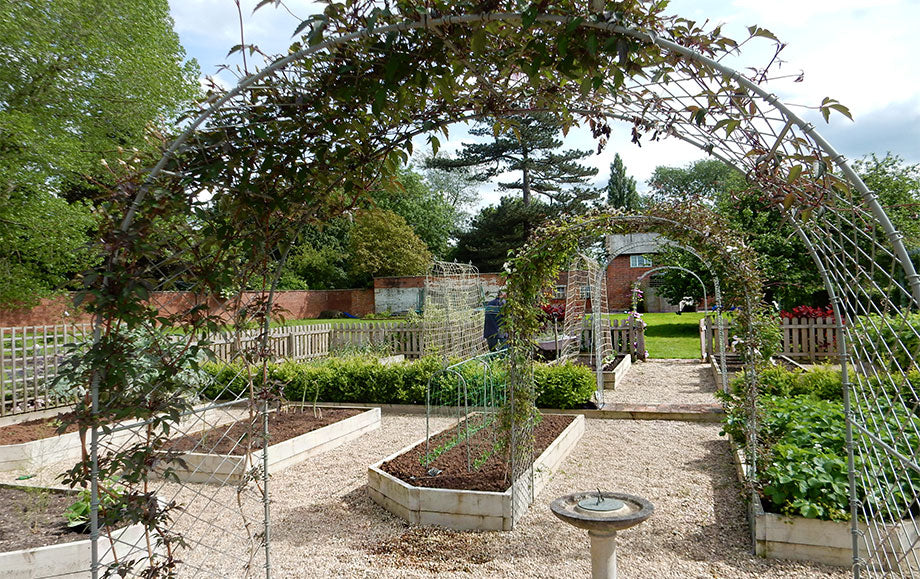Stepping into your first home brings a wave of excitement, especially when you envision the potential of your garden space. The idea of cultivating a personal oasis that reflects your tastes and serves as a retreat from the hustle and bustle of daily life is indeed thrilling. Navigating the initial steps of garden organisation doesn’t have to be a perplexing journey. With some thoughtful planning and a sprinkle of creativity, you can set the foundation for a garden that blossoms alongside your home-owning experience.
Planning Your Garden Layout
Creating a blueprint of your garden’s layout brings your vision closer to reality. Begin by drafting a simple map, pinpointing where you’d like to see bursts of colour, areas dedicated to homegrown veggies, and spaces for family activities. Remember, a garden’s beauty lies in its ability to be a sanctuary and a place of communal joy. Think about the flow between these areas, ensuring there’s harmony and accessibility, which are key to a garden that invites exploration and relaxation.
A crucial aspect of your layout should include considerations for growth and expansion. Plants will spread, and your interests may evolve, so allowing room for change is wise. Integrate flexible spaces that can adapt to future gardening ambitions, whether it’s expanding your collection of rose varieties or adding a new vegetable plot.
Choosing the Right Plants
The allure of a garden heavily lies in its plant inhabitants. When selecting flora, aim for a mix that ensures year-round vibrancy. Perennials provide a reliable backbone, returning each year with minimal fuss, while annuals can offer striking colour for a single season. Researching plants that are native to your area can also bring an effortless resilience to your garden, as these species are naturally equipped to thrive in local conditions.
Diversity in planting not only enhances the garden’s aesthetic appeal but also supports a healthy ecosystem. Incorporating a range of heights, textures, and colours creates a visually engaging space that delights the senses. Don’t shy away from seeking advice from local nurseries or garden centres; their expertise can introduce you to options you might not have considered.
Incorporating Structures
Integrating structures into your garden can transform it from a flat canvas into a three-dimensional masterpiece. Elements such as archways, pergolas, and raised beds add depth and interest, creating distinct areas within your garden. These structures not only serve aesthetic purposes but also practical ones, like supporting climbing plants or improving soil conditions for vegetable plots.
Among these structures, consider the benefits of adding a greenhouse shed combination like the options from S W Greenhouses. This innovative feature marries the utility of a shed with the nurturing environment of a greenhouse, offering a compact solution for those with limited space. It’s an ideal choice for gardeners looking to extend their growing season or protect sensitive plants, while also keeping gardening tools and essentials neatly organised.
Creating Pathways and Zones
The creation of pathways and zones within your garden is not just about guiding movement but also about crafting stories and experiences as one meanders through the space. Pathways, whether winding or straight, invite exploration and can subtly segment your garden into distinct areas or ‘rooms’, each with its own atmosphere and purpose. Material choice plays a key role here, with options like flagstone, wood chips, or brick offering varying textures and colours to complement your garden’s theme.
Zoning is equally important for maximising the use and enjoyment of your garden. Delineating spaces for relaxation, play, and cultivation can help organise your garden into a multifunctional landscape that caters to all household members’ needs. This approach not only enhances the garden’s visual appeal but also its utility.
Seasonal Considerations
A well-planned garden offers delights throughout the year, with each season bringing its own unique beauty. To achieve this, select a variety of plants that peak at different times, ensuring continuous interest from early spring blooms to autumnal hues and winter textures.
As the seasons change, so too will the tasks in your garden. Regular maintenance, tailored to the time of year, is essential for preserving its beauty and health. This might include clearing fallen leaves in autumn to prevent pests, or planting spring bulbs in the cooler months.
Sustainable Practices
Embracing sustainability in your garden not only benefits the planet but also enriches your gardening experience. Practices such as composting kitchen and garden waste reduce landfill contributions and create rich soil improver, boosting plant health naturally. Harvesting rainwater for irrigation conserves water and provides your plants with a more natural hydration method, free from the additives found in tap water.
Choosing disease-resistant plants and natural pest control methods minimises the need for chemical interventions, promoting a healthier, more resilient garden ecosystem. These sustainable choices foster a garden that thrives in harmony with its environment, offering a sanctuary for you and local wildlife alike.
Conclusion
Embarking on the journey of organising your garden as a first-time homeowner is a path filled with discovery, creativity, and connection. The joy of gardening lies in the continuous learning and the deep satisfaction of nurturing a living space that offers refuge, beauty, and a connection to the natural world. Your garden, with its unique blend of plants, structures, and wildlife-friendly features, becomes a testament to your care and vision, enriching your home and life with its ever-changing beauty.



